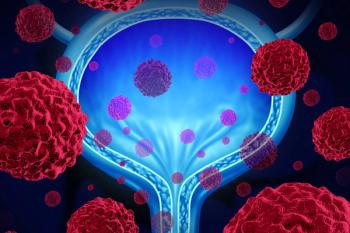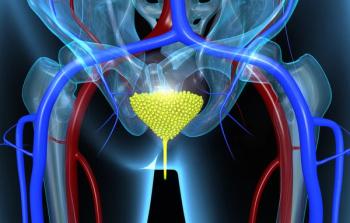
Arsenic in Drinking Water Linked to Uptick in Bladder Cancer?
The higher incidence of bladder cancer in the Northeast in the last 50 years may be attributed to the presence of arsenic in the drinking water, according to a new study.
The higher incidence of bladder cancer in certain Northeastern states-Vermont, New Hampshire, and Maine-over the last 50 years may be attributed to the presence of arsenic in the region’s drinking water, according to results of a new study
The incidence rates of bladder cancer in Maine, New Hampshire, and Vermont are about 20% higher than the overall incidence rate of bladder cancer in the United States. Other potential bladder cancer risk factors including smoking, occupational exposure, and consumption of certain foods were not attributed to the region’s increase in bladder cancer incidence.
Researchers led by Debra Silverman, ScD, chief of the occupational and environmental epidemiology branch at the National Cancer Institute, focused on arsenic in well drinking water as a potential cause of the higher incidence.
The population-based case-control study included 1,213 bladder cancer patients and 1,418 control subjects who provided information on suspected risk factors. Arsenic concentration information was estimated based on measurements of current and historical home water sample data.
The risk of bladder cancer increased with a greater intake of water (Ptrend = .003) and was statistically significant among those in the study who had a history of private well use (Ptrend = .01). Among individuals who were private well users, the association was greater if the well water was from shallow dug wells, which are more vulnerable to man-made source contamination compared to deeper drilled wells (Ptrend = .002 and Ptrend = .48, respectively).
The risk of bladder cancer was also higher if the well water use began prior to 1960, when the use of arsenic-based pesticides were common in the Northeast (Ptrend = .01). Among participants with the highest exposure, risk of bladder cancer was twice that of those with the lowest exposure (odds ratio, 2.24 [95% CI, 1.29–3.89]).
Prior studies of populations with high arsenic ingestion have shown arsenic to be a cause of bladder cancer, Silverman told Cancer Network. Studies in Chile, Argentina, and Taiwan prior to the use of water treatment were instrumental in establishing arsenic as a Group 1 carcinogen by the International Agency for Research on Cancer (IARC). There is now evidence suggesting that low and moderate exposure to arsenic can increase risk of this tumor type, said Silverman.
Other cancers linked to arsenic exposure include lung, liver, kidney, and digestive tract cancers, but the evidence of a causal link is strongest for bladder cancer, Silverman noted.
The risk of exposure to arsenic from wells has decreased recently because arsenic-based pesticides are no longer used and because the use of dug wells is not as common as in the 20th century. Currently, 10 ug/L is the regulatory standard for arsenic in drinking water supplied by municipalities, as established by the US Environmental Protection Agency.
One limitation of the study was the inability to precisely measure arsenic exposure via water consumption over an individual’s lifetime, particularly because there is little data on arsenic levels in well water prior to the 1960s.
“We are currently working on additional analyses from the study to address other exposures and genetic factors that may affect an individual’s susceptibility to arsenic-related bladder cancer,” Silverman told Cancer Network.
Newsletter
Stay up to date on recent advances in the multidisciplinary approach to cancer.


















































































